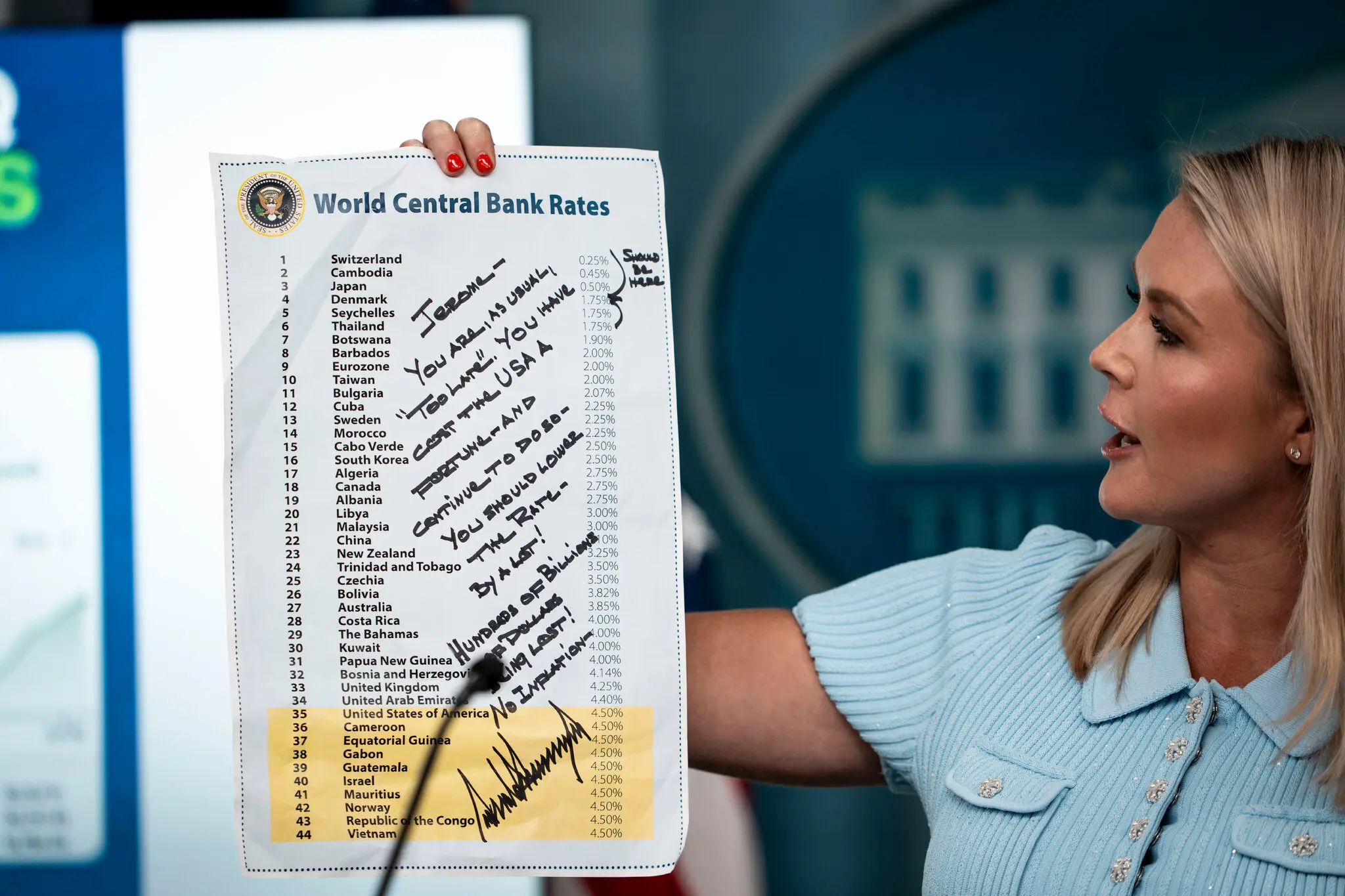Bitcoin (BTC) reclaimed the $93,000 threshold during the early hours of the Asian session on Wednesday. The show of strength came after President Trump articulated his position about Federal Reserve (Fed) chair Jerome Powell’s replacement talks.
Over the past several months, the pioneer crypto has demonstrated increased correlation with broader economic and political issues. This suggests that macroeconomics is growing in influence on Bitcoin.
Trump Has No Intention To Fire Fed’s Powell
Barely a week ago, BeInCrypto reported that a Fed chair change was imminent. This was amid the economic strain caused by Trump’s Tariffs.
The report followed Treasury Secretary Scott Bessent’s announcement that the Trump administration was planning to interview candidates to replace Jerome Powell.
Reports of opposing views between Trump and Powell concerning interest rate cuts exacerbated the idea. On the one hand, Trump wants the Fed to cut interest rates to cushion Americans from the effects of the trade wars.
“The Fed would be much better off cutting rates as US Tariffs start to transition (ease!) their way into the economy. Do the right thing,” Trump wrote on Truth Social.
On the other hand, Powell insists on a cautious approach to monetary policy decisions, rejecting further interest rate cuts. The Fed also made significant downward revisions to its 2025 economic projections.
These opposing views fanned speculation that Jerome Powell’s job as Fed chair was at risk. In a recent development, however, Trump stated that he has no plans to fire Powell.
“I have no intention of firing him…I would like to see him be a little more active in terms of his idea to lower interest rates,” Reuters reported, citing Trump telling reporters in the Oval Office on Tuesday.
In the immediate aftermath, Bitcoin shattered past the $93,000 threshold. As of this writing, BTC was trading for $93,136, representing a surge of almost 6% in the last 24 hours.

Notably, there are about 13 months left in Jerome Powell’s tenure as chair of the Federal Reserve.
Bitcoin Benefits From Eroded Trust in Government
BitMEX founder and former CEO Arthur Hayes commented on the swift reaction to this topic on the Bitcoin price chart.
“Trump says he wants to fire JAYPOW – dollar dips, BTC rips Trump says he has no intention of firing JAYPOW – dollar rips, BTC rips some more,” Hayes quipped.
This comment highlights market sensitivity to political uncertainty in 2025. In hindsight, the US Dollar Index (DXY) recently dropped to a 3-year low, fueled by President Trump’s push to oust the Fed chair.
In tandem, Bitcoin rallied as investors viewed it as a potential hedge against a weakening dollar and inflationary pressures.
As Trump’s stances cause market volatility, fluctuations in the dollar are bullish for Bitcoin, reflecting its appeal as a hedge against traditional financial (TradFi) instability.
BeInCrypto reported this status in a recent US Crypto News publication, citing Geoff Kendrick, the Head of Digital Asset Research at Standard Chartered.
According to Kendrick, Bitcoin is increasingly seen as a hedge against TradFi and US Treasuries risks.
“I think Bitcoin is a hedge against both TradFi and US Treasury risks. The threat to remove US Federal Reserve Chair Jerome Powell falls into Treasury risk—so the hedge is on,” Kendrick told BeInCrypto.
Meanwhile, Nate Geraci, the president of the ETF Store, says Bitcoin is benefiting from the erosion of trust in governments and politicians, which is pushing people towards alternatives.
“Bitcoin is one of the biggest winners from events over the past several weeks IMO, at least from a philosophical standpoint. Further erosion of trust in governments and politicians will push people towards alternatives. Not saying that is good or bad, but think logically,” Geraci remarked.
The post Bitcoin Reclaims $93,000 After Trump Quells Fed Chair Jerome Powell Firing Talks appeared first on BeInCrypto.










